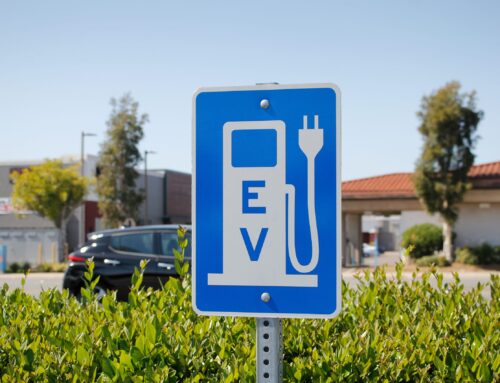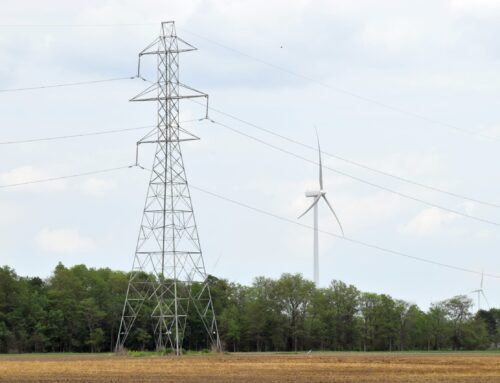NYC group is shifting narrative on street vendors and the environment
May 14, 2025
In New York City, street vendors are a critical, often overlooked part of the community who provide an essential service to millions of people. But in recent years, they’ve faced a growing challenge: harmful narratives that their work pollutes the city.
A recent study found that there are over 23,000 street vendors in New York City, the majority of whom are mobile food vendors already negotiating complex regulations, long hours, and financial instability. Many are also navigating an outdated and extremely limited permit system and dealing with police-targeted fines that can total thousands of dollars, leading vendors to operate in a constant state of uncertainty. For immigrant vendors in particular, language barriers, legal vulnerability, and lack of access to capital only deepen the struggle.
Adding to street vendors’ challenges, government agencies, advocacy groups, and news organizations like the New York Post have long targeted mobile food vendors, painting them as environmentally irresponsible burdens on the community, whose grills and gas-powered generators emit harmful fumes and create toxic air pollution. Critics also argue that street vendors are part of the city’s environmental decline, further marginalizing some of New York’s most visible and vulnerable immigrant workers.
The Street Vendor Project (SVP) has stepped in to help correct the narrative.
“Demonizing” vendors
As a project of the Urban Justice Center, SVP is a grassroots organization that advocates for vendors’ rights through legal support, policy campaigns, and leadership development. More recently, the group has worked at the intersection of environmental health, public safety, and street vendor justice.
For Mohamed Attia, a former street vendor who now works as the managing director of SVP, the environmental challenges vendors face feel personal. Attia emigrated from Egypt in 2008 and worked as a vendor for years before joining SVP. His experience selling hot dogs, smoothies, and halal chicken and rice gave him a firsthand understanding of the health and environmental struggles vendors face. But it also gave him a unique perspective on how the narratives around street vending needed to shift.
“The whole narrative was basically demonizing the vendors without really doing the work to include these communities in the conversation about protecting the environment,” Attia said.
Ninety-six percent of New York City’s food vendors are immigrants and already work in communities facing significant environmental health challenges. Last year, a report from the New York City Mayor’s Office of Climate and Environmental Justice found that almost half of the city’s population lives in neighborhoods that have been disproportionately harmed by environmental inequities, with communities of color and low-income communities at outsized risk. Still, immigrant street vendors, who are also vulnerable to policy discrimination, are being scapegoated and excluded from key discussions about environmental justice and improving the city’s air quality.
Rather than accepting the narrative, Attia and others in the SVP community decided to flip the script, recognizing that vendors could be part of the solution if given the right support. In 2023, this conversation led to creating the Environmental Justice for Vendors, By Vendors, a program intended to empower street vendors to become environmental leaders.
The process was extensive. In 2021, SVP surveyed 200 food vendors to assess their environmental practices and challenges. The survey explored why vendors used certain equipment, the types of fuel they relied on, and how they viewed their role in the city’s environmental ecosystem. The feedback was critical. In order to gauge what was missing, SVP needed to understand vendors’ established systems. For example, 97% of surveyed vendors reported relying on gas-powered generators, which emit pollutants that harm the environment and vendors’ health. These generators also contribute to noise pollution, an ongoing concern in high-foot-traffic neighborhoods. Vendors cited affordability and lack of information as key reasons for not switching to cleaner alternatives.
Armed with their research findings, SVP launched a pilot program to introduce street vendors to cleaner energy sources.
The program focused on helping vendors replace gas-powered generators with cleaner, more sustainable sources, such as rechargeable batteries.
“The health impact is just as significant,” Attia said. He explained that as a street vendor, he spent years of his life standing by generators for up to 12 hours a day. He still feels the physical effects on his voice and lungs—issues that were not apparent before his time as a vendor. “Folks are really struggling to identify another solution, another alternative, and that’s what we prioritize.”
The pilot program played out as a series of trial and error. Because the sizes of vendors’ carts varied, it was difficult to ascertain which batteries could fit into specific street carts. Additionally, battery performance varied, which would require some vendors to stop work to recharge.
While 91% of surveyed vendors said they were ultimately interested in connecting their carts to the local electric grid, a more immediate option over generators proved to be lithium-ion batteries that vendors could plug into their carts. However, the cost of transitioning to this cleaner technology still poses a significant challenge. The new battery systems are more expensive than fossil fuels and have costs that can soar into the thousands. It’s also worth noting that the tax incentives for switching to more sustainable options mostly help corporations, not small business owners.
Still, New York City’s mobile food vendors in New York are interested in making their carts more environmentally friendly—and not just because of the criticism that’s been lobbed their way.
The modern roots of street vending in New York City can be traced back to 1886, when four pushcart vendors set up shop on Hester Street, located in what is now known as the Lower East Side. Like today, vendors of the era were primarily from immigrant backgrounds, mostly Jewish and Eastern European. The ease with which vendors were once able to conduct business didn’t last long. Mayor Fiorello La Guardia led a campaign against street vendors, as highlighted by reporting from the New York Times published in 1938. “Pushcart peddlers are a menace to traffic, health, and sanitation,” La Guardia told the paper as part of a larger appeal to civic organizations to join him in his efforts to eliminate vendors from the streets.
La Guardia didn’t eliminate street vending, but he successfully made vendors’ lives difficult and created a system that still makes it challenging for vendors to obtain the licensing necessary to operate. In one early example, La Guardia launched a “war on Christmas trees,” an effort to ban vendors from selling Christmas trees on city streets without a permit. In response, the New York City Council passed a law that is still in effect, enabling vendors to sell trees only during the month of December.
New York City vendors aren’t the only ones subject to attacks from government officials, and they’re not the only ones to fight back.
Part of the solution
Publications such as L.A. Taco have long documented the city of Los Angeles’ extensive efforts to criminalize and target immigrant street vendors, and vendors’ successful organizing efforts to counter the attacks. The nonprofit Inclusive Action for the City (IAC) has been a key player assisting vendors in their fight.
IAC helped pass California Senate Bill 946, a monumental effort that in 2018 effectively legalized street vending in Los Angeles. In the years since, the organization has focused on supporting vendors by helping to simplify the permitting process and offering these “open-air entrepreneurs” microloans. In 2022, the organization was also a plaintiff in a landmark lawsuit that led LA to eliminate “no vending zones” that were a violation of SB 946 and prohibited vendors from selling at popular tourist destinations across the city. IAC argues that vendors should be viewed as part of the solution, not the problem.
This sentiment was echoed by Attia, who told Prism that when given the opportunity, vendors have embraced more environmentally friendly alternatives.
According to SVP’s survey, over the last year, 92% of vendors reported ending their business day early or suspending business operations for at least one day because of an extreme weather-related incident.
Attia cited a pilot program launched more than a decade ago, supported by a joint initiative from the New York City Mayor’s Office and the energy company Con Edison with the electrical distribution company Simply Grid. The pilot was run near Manhattan’s Union Square, a hub for food carts, and focused on the installation of an outlet that could power a food cart without a generator.
“The vendor told us, ‘This outlet gives me the electricity I need. I stopped using the generator completely,’” Attia recalled. Despite the success, Attia said Con Edison shut the program down, calling the effort a “social pilot” that “wasn’t scalable.” But with charging stations and mobile power units becoming more common, SVP is exploring its options.
In the meantime, SVP’s pilot program has entered its next phase: expanding access to rechargeable batteries to more street cart vendors, providing financial support for the transition, and advocating for tax incentives to ease the burden on small business owners who want to adopt technology they can’t currently afford.
The pilot program is just one part of larger environmental justice efforts aimed at actively involving vendors in conversations about sustainability. For example, as New York continues to rapidly expand its infrastructure to support electric vehicles, SVP is working to ensure that vendors aren’t left out. Last May, a New York City startup announced that it was developing curbside “trees” that could charge an electric car in five minutes.
“We’re seeing charging stations go up all over the city. We want to make sure that vendors are also included,” Attia said.
Another core focus is waste management. As New York City launches new initiatives to improve how locals and businesses separate and dispose of waste, SVP wants to see these systems extended to street vendors. This includes accessible composting options and organized recycling at vendor sites—tools that could dramatically reduce the environmental impact of daily operations.
Street vendors are effectively outdoor workers, and they are on the front lines of ever-worsening climate change. According to SVP’s survey, over the last year, 92% of vendors reported ending their business day early or suspending business operations for at least one day because of an extreme weather-related incident. While there’s still much work to be done to protect vendors and provide them with more sustainable options, Attia sees SVP’s efforts as an evolving model for others to follow.
“A lot is giving me hope,” Attia told Prism. “I think the biggest thing is the interest from different government agencies and elected officials. A lot of leaders are supporting our project to keep things moving in the right direction. I really hope we reach a point where dozens of vendors have access to this technology.”
Editorial Team:
Tina Vasquez, Lead Editor
Carolyn Copeland, Top Editor
Rashmee Kumar, Copy Editor
Search
RECENT PRESS RELEASES
Related Post




